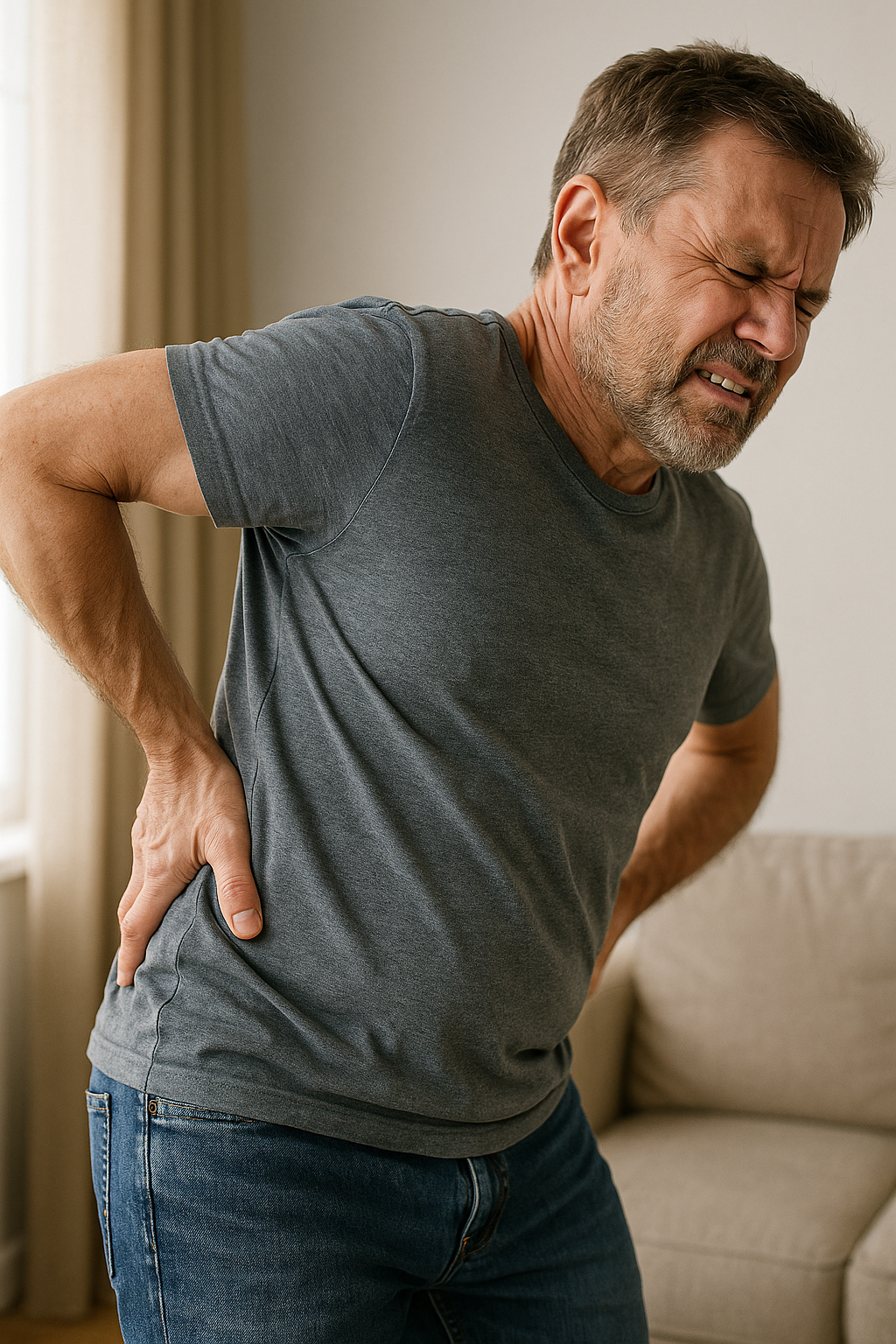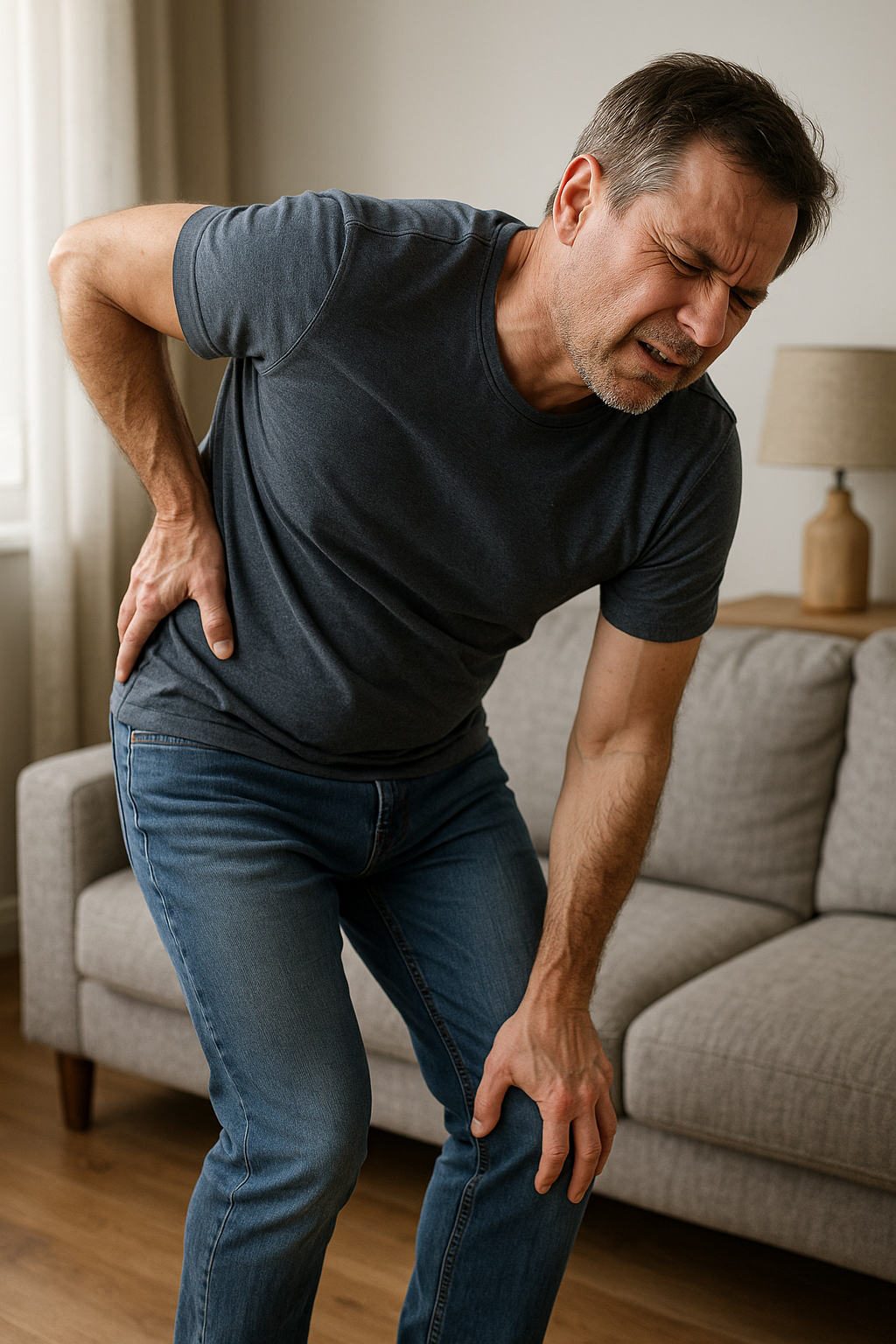Stabbing pain in the lower back is a sensation that many individuals have experienced at some point in their lives. This type of pain can be both alarming and debilitating, often signaling an underlying issue that requires attention. While it might be tempting to dismiss it as a minor inconvenience, it's essential to recognize that such pain can range from benign causes like muscle strain to more serious conditions such as herniated discs or nerve compression.
Understanding the nature of your lower back pain is crucial. It is often a symptom that your body uses to communicate that something isn't quite right. Whether it's a result of overexertion, poor posture, or an acute injury, identifying the cause of the pain is the first step toward effective treatment. In some cases, the pain might be a warning sign of a more serious condition that needs prompt medical attention.
Why early recognition matters
Early recognition of stabbing pain in the lower back is vital for several reasons. First, it allows for timely intervention, which can prevent the condition from worsening. Ignoring the pain or delaying treatment can lead to chronic issues that are more challenging to manage. By identifying the type of pain early on, you can determine whether it is a simple muscle strain that might heal with rest and conservative care or if it is indicative of a more severe problem that requires professional evaluation.
The ability to differentiate between benign and critical symptoms is also crucial. For instance, sharp, localized pain might suggest a muscle strain or spasm, whereas pain accompanied by symptoms like numbness, tingling, or weakness could indicate nerve involvement. Recognizing these distinctions can guide you in deciding whether to manage the pain at home or seek medical help.
In conclusion, stabbing pain in the lower back should not be ignored. By understanding the potential causes and recognizing the symptoms early, you can take appropriate action to address the issue. This proactive approach not only aids in relieving the immediate discomfort but also helps in preventing long-term complications. As you continue to explore this topic, you will gain deeper insights into the common causes and appropriate responses to lower back pain, ensuring that you are well-informed and prepared to manage your health effectively.
common causes of stabbing lower back pain
Experiencing stabbing pain in the lower back can be alarming, and understanding its potential causes is crucial for effective management. One of the most prevalent causes is muscle strain or spasm. This typically occurs due to overexertion, awkward movements, or lifting heavy objects improperly. Such actions can lead to acute, sharply localized pain that may restrict movement and cause discomfort.
Another significant cause is a herniated disc. This condition arises when the soft material inside a spinal disc pushes through a crack in the tougher exterior casing, potentially pressing on nearby spinal nerves. The result is often severe, sudden pain that can radiate into the legs, a symptom commonly known as sciatica. This pain is usually accompanied by numbness, tingling, or weakness in the affected area.
Sciatica itself is a condition characterized by pain that radiates from the lower back down through the legs. It is often caused by nerve root compression, most frequently resulting from herniated discs or spinal stenosis. The sensation can range from mild discomfort to sharp, stabbing pain, significantly affecting mobility and quality of life.
Additionally, acute injuries such as fractures or traumatic impacts are urgent causes of stabbing lower back pain. These injuries often occur after falls or accidents and require immediate medical attention to prevent further complications. Other potential causes include osteoporosis, which can lead to compression fractures, arthritis, spinal stenosis, and, in rare cases, serious infections or kidney problems.
warning signs and when to seek medical help
Recognizing the warning signs associated with stabbing lower back pain is essential for determining when to seek medical help. Differentiating between sharp, stabbing pain and dull aches can provide insights into the underlying issue. Sharp pain is often linked to acute injuries or nerve-related problems, whereas dull aches might suggest muscular or chronic conditions.
There are several red flags that necessitate immediate medical attention. These include pain that radiates into the legs, weakness, numbness, tingling, incontinence, or groin numbness. Such symptoms may indicate nerve compression or more severe conditions like cauda equina syndrome. Additionally, persistent or worsening pain, nighttime pain, or pain accompanied by fever or infection symptoms should prompt a medical evaluation.
In cases where the pain follows a recent trauma or accident, it is crucial to seek urgent care. Understanding these emergency indicators can help prevent further injury and ensure timely treatment.
treatment and management strategies
For many cases of stabbing lower back pain, conservative care approaches can provide relief. Initial self-care methods include rest, applying ice or heat to the affected area, and using nonsteroidal anti-inflammatory drugs (NSAIDs) to alleviate muscle strains and minor injuries. These strategies can be effective in managing pain and promoting healing.

Lumbar support belt
Provides stabilising lumbar back support, ideal for pain relief and daily comfort.
However, there are situations where medical intervention becomes necessary. If symptoms persist, worsen, or if any emergency signs appear, it is essential to seek professional evaluation. A healthcare provider can perform a thorough assessment, possibly including imaging tests, to determine the exact cause of the pain and recommend appropriate treatment options.
In summary, understanding the common causes and warning signs of stabbing lower back pain is vital for effective management. By recognizing symptoms early and implementing appropriate treatment strategies, individuals can alleviate pain and reduce the risk of long-term complications. Whether through conservative care or medical intervention, addressing lower back pain promptly can lead to improved outcomes and a better quality of life.
Advanced therapies and lifestyle changes for lower back pain
For those dealing with chronic stabbing pain in the lower back, advanced therapies offer promising relief. Non-invasive treatments, such as physical therapy and chiropractic care, can effectively address underlying issues without the need for surgery. These therapies often focus on strengthening the back muscles, improving flexibility, and enhancing posture to prevent future episodes of pain.
Additionally, incorporating ergonomic aids into daily routines can significantly reduce the risk of back pain. Ergonomic chairs, lumbar cushions, and adjustable desks are designed to support the natural curve of the spine, minimizing strain during prolonged sitting or standing. Lifestyle changes, such as regular exercise, maintaining a healthy weight, and practicing proper lifting techniques, also play a crucial role in preventing and managing lower back pain.

Men's Posture Shirt™ - Black
Patented shirt with NeuroBand™ tech to help relieve pain and improve posture daily.
Case studies: common scenarios and prevention tips
Consider the case of Sarah, a 35-year-old office worker who experienced stabbing pain in her lower back after lifting a heavy box improperly. This scenario highlights the importance of using correct lifting techniques, such as bending at the knees and keeping the load close to the body, to avoid muscle strain. By incorporating ergonomic solutions like a lumbar cushion at her workstation, Sarah was able to alleviate her pain and prevent future injuries.
In another example, John, a 45-year-old runner, developed acute lower back pain after a sudden twist during a workout. This incident underscores the need for proper warm-up routines and stretching exercises to enhance flexibility and prevent injuries. John's recovery involved physical therapy sessions focused on strengthening his core and back muscles, which helped him return to his active lifestyle.
Concluding remarks
Understanding and addressing stabbing pain in the lower back is essential for maintaining overall health and well-being. Recognizing symptoms early and implementing comprehensive care strategies, including advanced therapies and lifestyle changes, can significantly improve outcomes. By taking proactive steps to manage and prevent back pain, individuals can enhance their quality of life and reduce the risk of long-term complications.
Frequently Asked Questions
What causes stabbing pain in the lower back?
Stabbing pain in the lower back can result from various causes, including muscle strain, herniated discs, and sciatica. Muscle strain often occurs due to overexertion or improper lifting, while herniated discs and sciatica involve nerve compression, leading to severe pain.
When should I see a doctor for lower back pain?
It is important to seek medical attention if you experience red flags such as pain radiating into the legs, weakness, numbness, tingling, incontinence, or persistent and worsening pain. These symptoms may indicate serious conditions requiring professional evaluation.
How can I manage mild stabbing pain at home?
For mild stabbing pain, home management strategies include resting, applying ice or heat to the affected area, and using over-the-counter pain relief medications. These methods can help alleviate discomfort and promote healing.
Are there any long-term solutions for preventing lower back pain?
Long-term prevention of lower back pain involves using ergonomic aids, engaging in regular exercise, and practicing proper lifting techniques. These measures help maintain spinal health and reduce the risk of future pain episodes.
Can ergonomic products help with stabbing back pain?
Yes, ergonomic products like lumbar cushions and braces can provide support to the lower back, promoting proper posture and reducing strain. These aids are effective in both preventing and managing stabbing back pain.
Kilder
- Redefine Healthcare. (n.d.). "Sharp Stabbing Pain in the Lower Left Side of the Back."
- Healthline. (n.d.). "Sharp Pain in Lower Back."
- Medical News Today. (n.d.). "What to Know About Lower Back Pain."
- Mount Sinai. (n.d.). "Low Back Pain - Acute."
- UT Southwestern Medical Center. (n.d.). "5 Signs Your Back Pain Might Be an Emergency."
- Ortho United. (n.d.). "I Have a Sharp Pain in My Lower Back - What Could It Be?"
- Cleveland Clinic. (n.d.). "Lower Back Pain."
- University of Maryland Medical System. (n.d.). "Spine Conditions: Signs and Symptoms."
- Mayo Clinic. (n.d.). "Back Pain - Symptoms and Causes."


















